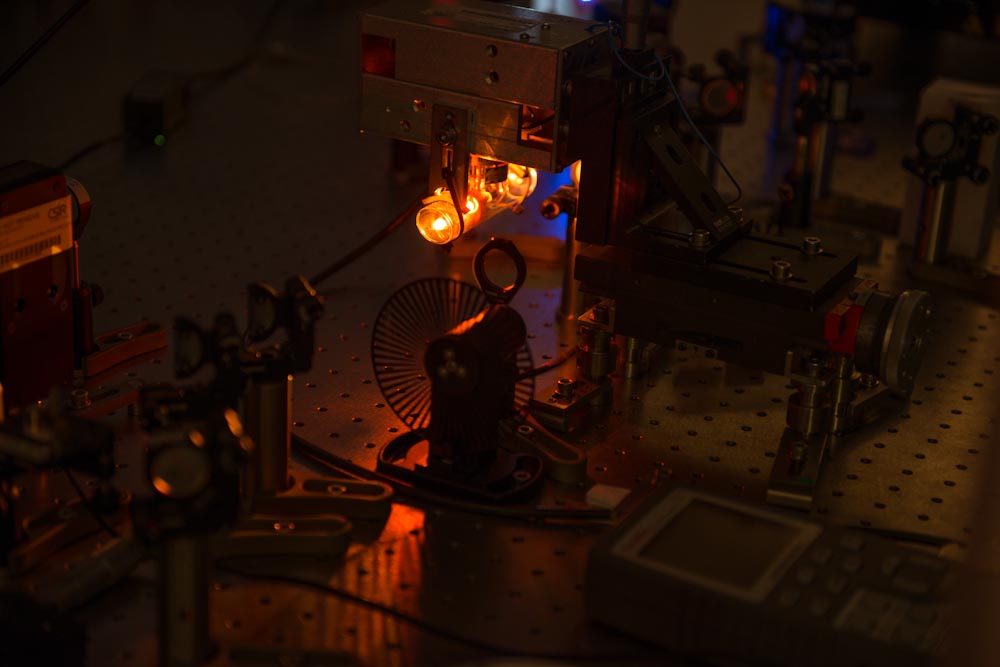Research
|| Kwantum beheer Tuis? || Navorsing || Publikasies || ?Groep ?|| Geleenthede || Borge? ||?


Weak measurement quantum feedback control
Closed-loop feedback is a control technique widely used in modern science and engineering. Common examples include temperature control using an air conditioner, cruise control of a motor car, or autopilot of an aeroplane. In addition, biological systems exploit the technique for enumerable biological functions. In quantum systems however, one is immediately confronted with the difficulty that the usual projective measurements disrupt coherent dynamics, thus complicating the state estimation process needed for feedback. We study so-called weak measurements [1-5], a class of positive operator valued measurements, as a means to achieve state estimation and enable feedback control of the coherent dynamics of trapped ions. This technique has previously been employed to estimate photon numbers in a microwave cavity [6], or to stabilise Rabi oscillations of superconducting qubits [7].
[1] Quantum measurement and Control, H.W. Wiseman, G.J. Milburn, Cambridge 中国体育彩票 Press, Cambridge (2010)
[2]Quantum feedback control of a solid-state qubit, R. Ruskov, A.N. Korotkov, Phys. Rev. B, 66, 041401(R) (2002)
[3] Evolution of a qubit under the influence of a succession of weak measurements with unitary feedback, H. Audretsch, L. Diosi, T. Konrad, Phys. Rev. A 66, 022310 (2002)
[4] Qubit feedback and control with kicked quantum nondemolition measurements: A quantum Bayesian analysis, Phys. Rev. B 74, 085307 (2006)
[5]Frequency tracking an parameter estimation for robust quantum state estimation, J.F. Ralph, K. Jacobs, C.D. Hill, Phys. Rev. A 84, 052119 (2011)
[6] Real-time quantum feedback prepares and stabilizes photon number states, C. Sayrin et al., Nature 477, 73 (2011)
[7] Stabilizing Rabi oscillations in a superconducting qubit using quantum feedback, R. Vijay et al., Nature 490, 77 (2012)
Dynamical Decoupling
Applications reliant on coherent quantum effects inevitably face the challenge of overcoming the unwanted influence of decohering noisy environments. Powerful techniques to mitigate such effects have been developed. Many of these techniques, collectively called dynamically decoupling, are multipulse generalisations of the spin echo invented by Erwin Hahn in 1950 [1]. Our current effort focuses on finding robust control techniques and tractable mathematical descriptions of the techniques in complex noisy environments.
[1] E.L. Hahn, Spin Echoes, Physical Review 80, 580 (1950)




